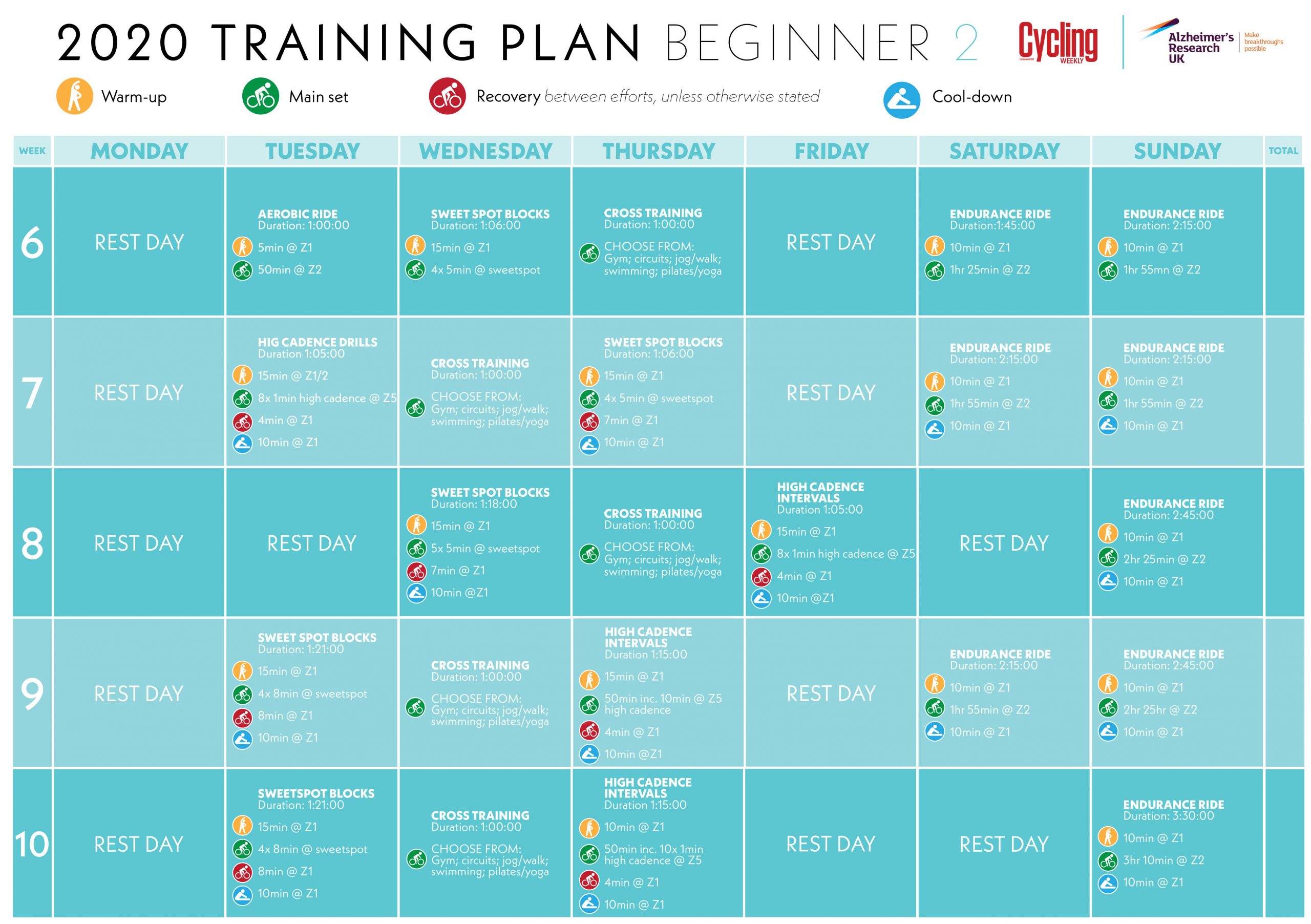
Cycling Training Plan for Beginners: Building a Solid Foundation
Cycling, a sport that blends cardiovascular fitness with scenic exploration, offers a wealth of benefits for both physical and mental well-being. Whether your goal is to lose weight, improve your fitness, or simply enjoy leisurely rides, a structured training plan is key to achieving your objectives safely and effectively. This comprehensive guide provides a beginner-friendly cycling training plan, encompassing crucial aspects like setting realistic goals, incorporating different training types, and prioritizing recovery.
Phase 1: Building the Base (Weeks 1-4)
This initial phase focuses on establishing a consistent cycling routine and building a solid aerobic base. The emphasis is on low-intensity rides, gradually increasing duration and frequency. Avoid pushing yourself too hard during this phase; the goal is to build endurance without causing burnout or injury.
-
Week 1:
- Monday: Rest
- Tuesday: 30-minute easy ride, focusing on comfortable cadence and relaxed posture.
- Wednesday: Rest or light cross-training (e.g., walking, swimming).
- Thursday: 30-minute easy ride.
- Friday: Rest
- Saturday: 45-minute easy ride.
- Sunday: Rest or longer, very easy ride (60 minutes maximum).
-
Week 2:
- Repeat Week 1, increasing ride duration by 10-15 minutes on longer rides.
-
Week 3:
- Repeat Week 2, adding a short interval session (see explanation below). This could be 4 x 1-minute hard efforts with 4-minute easy recovery between each.
-
Week 4:
- Repeat Week 3, increasing interval duration to 2 minutes with a 3-minute recovery.
Understanding Interval Training: Interval training involves alternating between high-intensity bursts and periods of rest or low-intensity recovery. This type of training improves both aerobic and anaerobic fitness, crucial for cycling performance. Always start with shorter intervals and gradually increase duration and intensity as your fitness improves. Remember to listen to your body and adjust the intensity accordingly.
Phase 2: Increasing Intensity (Weeks 5-8)
This phase builds upon the foundation established in Phase 1, gradually increasing intensity and duration of rides. We introduce hill training, which is vital for developing leg strength and power. Remember to maintain proper form and avoid overexertion.
-
Week 5-8: Increase ride duration by 15-20 minutes per week on longer rides. Incorporate one or two hill sessions per week. Hill sessions can involve riding up a hill at a moderate to challenging pace, then recovering on the descent. The number of repetitions and the length of the hills should be adjusted based on your fitness level. Aim for 3-5 repetitions, focusing on maintaining a consistent cadence and effort.
-
Interval Training Progression: Gradually increase the duration and intensity of your interval sessions. For example, you might progress from 2 x 2 minutes to 3 x 3 minutes, always ensuring adequate recovery periods. Consider incorporating different interval structures, such as 4 x 4 minutes with 4-minute recovery, or 6 x 1 minute with 1-minute recovery.
-
Incorporate Tempo Rides: Tempo rides involve sustained efforts at a challenging but sustainable pace (approximately 70-80% of your maximum heart rate). These rides improve your aerobic capacity and lactate threshold. Start with shorter tempo rides (20-30 minutes) and gradually increase the duration as your fitness improves.
Phase 3: Building Strength and Endurance (Weeks 9-12)
This phase focuses on further enhancing strength, endurance, and speed. We introduce longer rides, more challenging interval sessions, and potentially some group rides for added motivation and social interaction.
-
Long Rides: Gradually increase the duration of your long rides, aiming for at least one ride per week that exceeds 60-90 minutes. These long rides build endurance and stamina. Maintain a comfortable pace and focus on consistency.
-
Advanced Interval Training: Increase the intensity and duration of your interval training sessions. You might incorporate more challenging intervals, such as 8 x 3 minutes with 3-minute recovery, or longer intervals with shorter recovery periods.
-
Group Rides (Optional): Joining group rides can be a fantastic way to improve your fitness, learn from experienced cyclists, and enjoy the social aspect of cycling. However, ensure you’re comfortable with the pace and distance before joining a group ride.
-
Strength Training (Optional): Incorporating strength training exercises, such as squats, lunges, and core work, can significantly improve cycling performance by strengthening supporting muscles.
Essential Considerations:
- Warm-up: Always begin your rides with a 10-15 minute warm-up, including light cardio and dynamic stretches.
- Cool-down: End your rides with a 10-15 minute cool-down, including light cycling and static stretches.
- Nutrition and Hydration: Proper nutrition and hydration are crucial for optimal performance and recovery. Consume adequate carbohydrates, protein, and fluids before, during, and after your rides.
- Gear: Invest in comfortable and well-fitting cycling gear, including a helmet, cycling shorts, and gloves. Properly adjusted bike fit is also crucial to prevent injuries and maximize efficiency.
- Listen to your body: Rest when you need to. Don’t push through pain. Overtraining can lead to injury and burnout. Prioritize recovery and allow your body adequate time to adapt to the increased training load.
- Progression: Gradually increase the intensity and duration of your rides. Avoid making significant jumps in training volume or intensity too quickly.
- Rest and Recovery: Incorporate rest days into your training schedule to allow your body to recover and rebuild. Adequate sleep is also essential for optimal recovery.
- Monitoring Progress: Track your progress by recording your ride duration, distance, and heart rate. This will help you monitor your fitness improvements and identify areas for improvement. Consider using a cycling computer or fitness tracker to monitor your progress effectively.
This training plan serves as a guideline. You may need to adjust it based on your individual fitness level, goals, and available time. Remember to consult with a healthcare professional before starting any new exercise program, especially if you have any underlying health conditions. Cycling can be a rewarding and enjoyable activity. With dedication, consistency, and a well-structured plan, you’ll be amazed at the progress you can achieve. Enjoy the ride!



